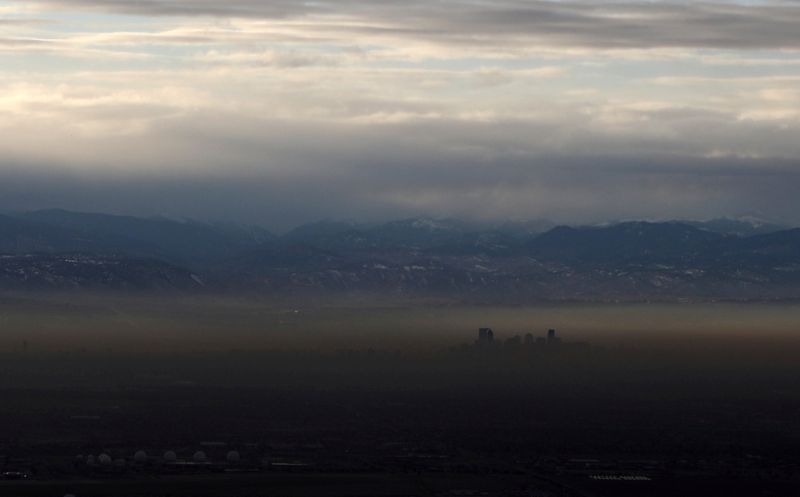By Valerie Volcovici
WASHINGTON (Reuters) - The U.S. Environmental Protection Agency will tighten national air quality standards for fine particle pollution emitted from vehicles and industrial sources for the first time since 2012, the agency said on Friday.
Fine particulate matter, or soot, comes from sources ranging from power plants to cars and trucks and refineries. It causes lung and heart damage and has been found to disproportionately affect low-income communities, according to the EPA.
"Fine particulate matter is both deadly and extremely costly," EPA Administrator Michael Regan told reporters, adding the decision was based on science and a rigorous evaluation of available data.
The proposal would lower the allowable concentration of particulate matter smaller than 2.5 microns, or PM 2.5, to a range of 9 to 10 micrograms per cubic meter (µg/m3) on average per year, from the current 12 µg/m3 in place since 2012. The EPA said it would also take public comment on revising the level to as low as 8 µg/m3, and as high as 11 µg/m3.
Public health and environmental groups on Friday welcomed the decision but criticized the agency for not going further.
Most members of the EPA's Clean Air Scientific Advisory Committee (CASAC) had recommended that the annual average start in a range as low as 8-10 µg/m3 and the primary 24-hour PM 2.5 standard be lowered to 25 µg/m3. EPA left the 24-hour standard intact at 35 µg/m3.
A study that the Environmental Defense Fund commissioned found that an annual standard of 8 µg/m3 prevents more than four times as many premature deaths as a standard of 10 µg/m3.
"The science is clear that we need standards at the most protective ends of the ranges that EPA's own scientific advisors recommended," said National Assistant Vice President at the American Lung Association Laura Kate Bender, who said dozens of groups will press for tighter standards during the 60-day public comment period.
The EPA evaluates the PM2.5 standard every five years and tends to tighten the level after review. It will finalize the rule later this year after it reviews public comments.
Former President Donald Trump's administration had kept the 2012 standard despite mounting research that those levels threaten public health.
The EPA estimates that an annual PM2.5 standard of 9 µg/m3 would prevent up to 4,200 premature deaths per year and yield $43 billion in net health benefits in 2032.
Groups representing the cement, manufacturing and oil industries criticized the rule for adding regulatory burdens and said some companies may not be able to comply.
"The proposed tightening of PM NAAQS will likely result in PM emissions standards being technically and economically infeasible for the industry to meet," said Mike Ireland, president of the Portland Cement Association.

Meanwhile, Earthjustice, which had sued the EPA to update the PM2.5 standard left by the Trump administration, said Friday's proposal was a "missed opportunity" to address daily spikes in soot pollution that affect some 63 million people in the United States.
"EPA is not living up to the ambitions of this administration to follow the science, protect public health, and advance environmental justice,” said Seth Johnson, Earthjustice attorney.